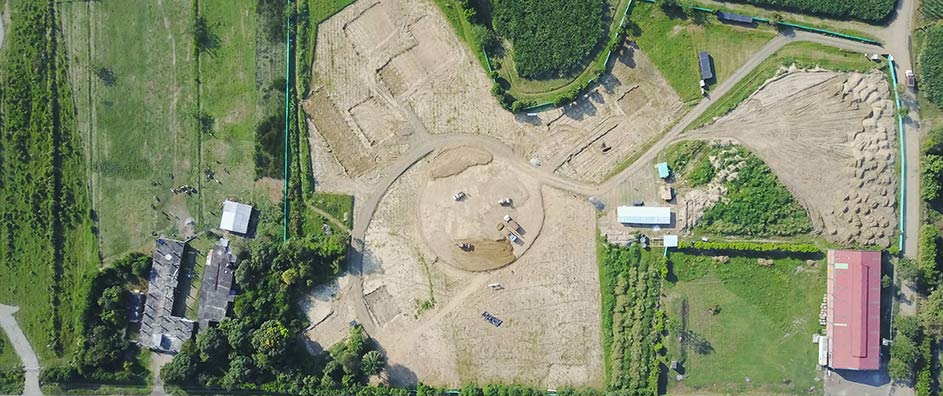In the tapestry of architectural splendor and spiritual haven, a Local Bahá’í House of Worship stands not merely as a structure, but as an intrinsic part of the ecosystem it inhabits. This sanctuary of tranquility often harmonizes with a native forest, creating a unique symbiosis between human devotion and nature’s beauty. The Bahá’í teachings, which advocate for the oneness of humanity and the interconnectedness of all existence, manifest vividly in this setting. This article explores the philosophical underpinnings, architectural ingenuity, and ecological significance embodied in such a sacred space.
To appreciate the profundity of a Bahá’í House of Worship surrounded by a native forest, one must understand the ethos of the Bahá’í Faith itself. Central to this belief system is the idea that every individual can cultivate a direct relationship with the Divine. Houses of Worship are envisioned as places where people can congregate regardless of their backgrounds, fostering unity among diverse communities. This principle of inclusivity is analogous to the diverse flora and fauna of a native forest, where myriad life forms coexist, each contributing to the ecosystem’s health and balance.
The architectural design of a Bahá’í Temple is imbued with symbolism. Often circular in form, the structure embodies ideas of wholeness and continuity. Its design incorporates natural light, manifesting a divine connection that transcends the physical realm. The ethereal ambiance created within echoes the serenity of the natural surroundings, enhancing the spiritual experience of the worshippers. Each space within the temple is deliberately crafted to inspire reflection, meditation, and contemplation—essential elements of personal spiritual growth.
Moreover, the coherence between the Bahá’í House of Worship and the native forest serves an ecological purpose. Native forests are not merely scenic backdrops; they are vibrant ecosystems that provide crucial habitat for local fauna and flora. The Bahá’í teachings emphasize responsibility toward the environment, urging followers to engage actively in stewardship. By situating a House of Worship amidst a flourishing forest, the Bahá’í community manifests its commitment to environmental sustainability and ecological balance. This coalescence of the sacred and the natural world proclaims a profound truth: the Divine is found in both worship and nature.
Consider the metaphor of the forest as a living testament to resilience. Each tree stands tall, bearing witness to seasons of change, much like individuals navigating their spiritual journeys. The native forest, thus, becomes a metaphor for collective growth and spiritual evolution. Just as trees interlace their roots for stability, so too do disciples of the Bahá’í Faith find strength in unity through collaboration and shared aspiration. This metaphor deepens the appreciation for the Bahá’í House of Worship, transforming it from a mere physical structure into a potent symbol of spiritual integrity and environmental harmony.
The native forest surrounding the Bahá’í Temple also plays a crucial role in community building. Events and gatherings hosted in and around this sacred space cultivate a culture of connection and fellowship. Nature walks, educational programs, and spiritual retreats leverage the forest’s natural allure, drawing individuals into a shared sacred experience that fosters mutual respect and understanding. These events underscore the Bahá’í belief in service and community engagement, manifesting in collective efforts to care for the forest and each other. This reciprocal relationship not only nurtures biodiversity but also strengthens the bonds among participants.
A Bahá’í House of Worship with a native forest is thus a reservoir of inspiration, offering a sanctuary for introspection and community that resonates with the core precepts of the Bahá’í Faith. The lush greenery enveloping the temple serves as both a protective cloak and an inviting embrace, urging visitors to delve deeper into their spiritual inquiries. This setting becomes an invigorating laboratory for contemplation, where nature’s tranquility permeates every encounter, enhancing the spiritual milieu.
Sustainability is another cornerstone upon which this sacred space rests. The Bahá’í community is committed to aligning its practices with ecological integrity. By harnessing local flora in their landscaping, they nurture indigenous biodiversity and reduce environmental footprints. Each plant species is chosen not only for its beauty but also for its role in the local ecosystem, echoing the Bahá’í House of Worship’s philosophy of harmony and balance. Executed with diligence, these practices weave the narrative of environmental stewardship through the very soil of the location.
Furthermore, the cyclical heartbeat of nature serves as a poignant reminder of life’s transience and continuity. The changing of seasons reflects the dual journey of humanity: the joys of life and the inevitability of growth through tribulation. A Bahá’í House of Worship amidst a native forest reminds individuals of their place in the grand tapestry of creation. As the forest flourishes, so too can spiritual aspirations evolve, intertwined within the threads of this cosmic symphony.
In summation, the Local Bahá’í House of Worship integrated with a native forest emerges as a beacon of hope and interconnectedness. It embodies the teachings of the Bahá’í Faith, illustrating the beautiful dance between worship and ecological stewardship. In this sacred space, the nuances of faith echo through the rustling leaves, inviting individuals from all walks of life into an eternal dialogue with their higher selves and the world around them. Let this vision inspire not only reverence for nature but also a commitment to nurturing the sacred balance within ourselves and our communities.
